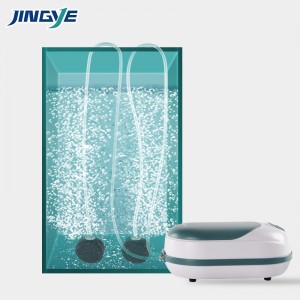Submersible pumps are essential tools for a variety of applications, from residential water supply to industrial processes. Understanding their typical lifespan and how to extend it can save you time, money, and hassle. Here’s a comprehensive guide based on the latest industry insights.
Typical Lifespan of a Submersible Pump
On average, a well-maintained submersible pump can last anywhere from 8 to 15 years. However, some high-quality pumps, especially those from reputable brands, can exceed this range and last up to 20 years or more. The actual lifespan depends on several factors:
Factors Affecting Lifespan
1. Water Quality: Pumps operating in water with high sediment or mineral content tend to have a shorter lifespan due to increased wear and tear.
2. Usage Frequency: Pumps that run continuously or handle heavy loads experience more wear and may have a shorter lifespan.
3. Operating Conditions: Extreme temperatures or corrosive environments can degrade pump components faster.
4. Maintenance Schedule: Regular maintenance is crucial for prolonging the pump’s life.
5. Installation Quality: Proper installation according to the manufacturer’s guidelines ensures optimal performance and longevity.
Tips to Extend the Lifespan of a Submersible Pump
1. Proper Installation
Ensure the pump is installed correctly, following the manufacturer’s guidelines. Proper alignment, securing, and electrical connections are essential. Consider professional installation to avoid errors that could lead to premature failure.
2. Regular Maintenance
Implement a comprehensive maintenance schedule:
- Weekly Checks: Monitor for unusual sounds, vibrations, leaks, and check flow/pressure.
- Monthly Inspections: Clean the pump, inspect seals, and check for leaks.
- Annual Maintenance: Perform detailed checks, including lubrication, inspection of bearings, and replacement of worn parts.
3. Monitor Operating Conditions
Regularly check the pump’s operating conditions, such as temperature and pressure. Address any deviations promptly to prevent damage.
4. Protect Against Corrosive Materials
If the pump handles corrosive substances, use chemically resistant materials or coatings. Installing additional filtration systems can also help protect the pump.
5. Avoid Overworking the Pump
Ensure the pump is appropriately sized for your needs. Overworking the pump can lead to excessive wear and reduce its lifespan. If additional capacity is needed, consider upgrading to a larger model or using multiple pumps.
6. Water Quality Management
Install sediment filters or water softeners to reduce the impact of hard water or high sediment levels. Regular water quality testing can help you implement targeted treatment strategies.
7. Professional Inspections
Periodic professional inspections can identify potential issues early and ensure the pump operates efficiently.
A submersible pump’s lifespan is influenced by various factors, but with proper care and maintenance, you can significantly extend its operational life. By following these tips and investing in high-quality pumps from reputable manufacturers, you can ensure reliable performance and reduce the need for costly replacements.
For more detailed information or specific advice tailored to your pump model, pls consult our website https://www.jingyeaquarium.com/.
Post time: May-08-2025

